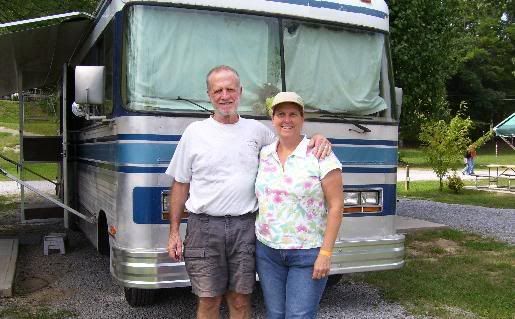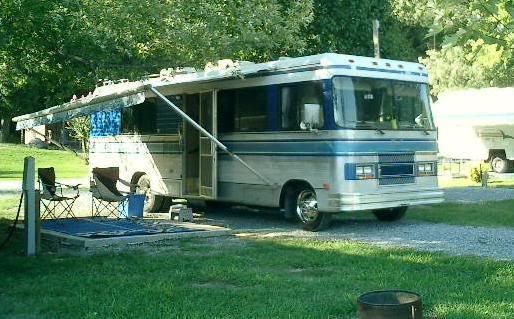Page 1 2
Go to...  | Start A New Topic  | Search  | Notify  | Tools  | Reply To This Topic  |  |
| First Month Member |
I know this is second-hand, but I read or heard of an engine-fire related lawsuit that involved some fuel line that was not SAE approved. Or perhaps not specifically approved by the manufacturer. I don't remember any particulars, though. I remember when gasoline started having alcohol, the Coast Guard got pretty specific about fuel line. Something to do with the older spec lines being more permeable to the new gasoline. That issue might not be as big a deal since our MHs are not enclosed nor do they have a bilge. Which of the 21 hits you cited is the hose you use, say for 5/16" fuel lines? . 84 30T PeeThirty-Something, 502 powered | |||
|
 6/12 6/12Formally known as "Humbojb"  |
Did a little more on the venting/leaking of the mid tank on by Regal. It turns out that the vent line actually goes into the fuel filler about 3" down from the beginning of the filler tube/pipe. But the fuel cap is not a venting cap. Its one that is for pressurized fuel tanks. Should I get rid of the cap and get a venting cap? I still plan to drop the tanks and replace both the filler hose and the vent hose.
| ||||||||||||
|
"It turns out that the vent line actually goes into the fuel filler about 3" down from the beginning of the filler tube/pipe. But the fuel cap is not a venting cap. Its one that is for pressurized fuel tanks. Should I get rid of the cap and get a venting..." My understanding is: this vent line only acts while filling, i.e. gas is being "poured" down the filler tube and the vent prevents premature shutoff - a common ailment among older bodies "You are what you drive" - Clint Eastwood | ||||
|
| The Old Man and No Barth |
FWIW - Many years ago I had a '53 Packard. Coming home from a business trip to Wyoming, I gassed up, but a few miles from home my engine quit. A neighbor towed me home & I found the gas station attendant had not replaced my fuel tank cap, but had installed a cap that fit nicely, and completely sealed the tank opening. I hadn't run out of gas, & my fuel pump didn't fail. The fuel pump had pumped all the gas it could until the fuel tank collapsed as far as it could under atmospheric pressure. If your tank hasn't collapsing as fuel is used, it's getting air from somewhere, probably through the same place the fuel leaks out when you fill the tank. If you replace your vent & filler hoses, & get everything sealed up nicely, you might encounter the same problem I had if your filler cap won't admit air to the tank. | |||
|
 3/11 3/11 |
To start off check this site: http://www.acehardwaresuperstore.com/fuelwater-separato...-p-66533.html?ref=42 The Chevrolet 454 with the Rochester 4 barrel carb used a fuel tank with up to four lines on the pickup. The first and largest connected to the vent on the backside of the filler housing. It was to keep the fuel from vomiting on you when filling. Another went to the charcoal canister to draw vapors back to the tank; this is not very efficient and it can cause problems when the canister gets clogged or the soft rubber line is pinched etc. The third line feeds the fuel pump and on some applications there can be a return line - not very likely because the pump is not capable of flowing high pressure or volumes. You will be able to measure pressure and it is in the 6 to 8 psi range. The fourth one, on motorhomes was the supply to gas powered generators and it went backwards. You do not want to vent the gas cap - as it will prevent the vapor return from working and the canister will become contaminated and a potential fuel tank, not a good idea near the heat of the engine. To work properly your emission system has to be functioning and if it has been removed you have a completely different problem. You will need to plug the vapor line on the front of the carb, remove the charcoal canister and return line to the tank, plug the tank inlet and then install a vented gas cap. These are not manufactured anymore and are hard to find. If you do not do this the tank will become a sealed container and the lack of a vent will lower the pressure and the pump cannot draw fuel for the engine. You will start the unit and shortly after it will stall. You should get rid of all those pesky inline cartridges and run steel lines from the tank to the canister filter shown above and then have a racing fuel line from the frame to the pump inlet. That is the only flexible line you need and you could mount the larger canister near it for ease of maintenance. This is described in the Chevy Motorhome Chassis Maintenance Manual which can still be found on the internet and sometimes other older motorhomes that used the same P-30 chassis. Someone has a copy that can make a xerox of for you. 1993 32' Regency Wide Body, 4 speed Allison Trans, Front Entry door, Diamond Plate aluminum roof & 1981 Euro 22' w Chevy 350 engine and TH 400 tranny | |||
|
"Host" of Barthmobile.com 1/19 1/19 |
5/16 fuel line from NAPA. This is a "Gates" hose.
| |||||||||||||||
| ||||||||||||||||
| First Month Member |
It used to be a common practical joke to switch the radiator and fuel caps on Model A Fords. . 84 30T PeeThirty-Something, 502 powered | |||
|
 6/12 6/12Formally known as "Humbojb"  |
Tom K referred to a 'Chevrolet Motor Home Chasis Maintenance Manual' that would be helpful in learning about the entire fuel delivery system on my 85 Regal P32 454. Does anyone know where I could get such a manual? I Googled it but didn't have much success. Also, is the fuel line 5/16" ID? I've looked at it and can't tell and don't want to take it off with nothing to put back on in it's place. Also have looked at the Shields Fire-Alcol fuel line and discovered that West Marine has a store in Knoxville. Bill H N.Y. do you think the Shields fuel line would be better than the NAPA line you use in your business? Also, would anyone know the size of the fuel filler hose? Again, I have an aversion to taking stuff apart without knowing what I'll replace it with although I may not have another option. Thanks for all the help
| ||||||||||||
|
 6/12 6/12Formally known as "Humbojb"  |
Some more questions. I've studied the regular worm style clamps and the fuel injection clamps Bill H uses on his Jag. so I understand the difference. If I use the fuel line from West Marine which is some kind of reinforced rubber with two outer layers of high strength fabric, which style of clamp would be best? My system is not pressurized so this all might be overkill but it will give me more piece of mind. Jim
| ||||||||||||
|
| Powered by Social Strata | Page 1 2 |
| Please Wait. Your request is being processed... |
|
This website is dedicated to the Barth Custom Coach, their owners and those who admire this American made, quality crafted, motor coach.
We are committed to the history, preservation and restoration of the Barth Custom Coach.
We are committed to the history, preservation and restoration of the Barth Custom Coach.





